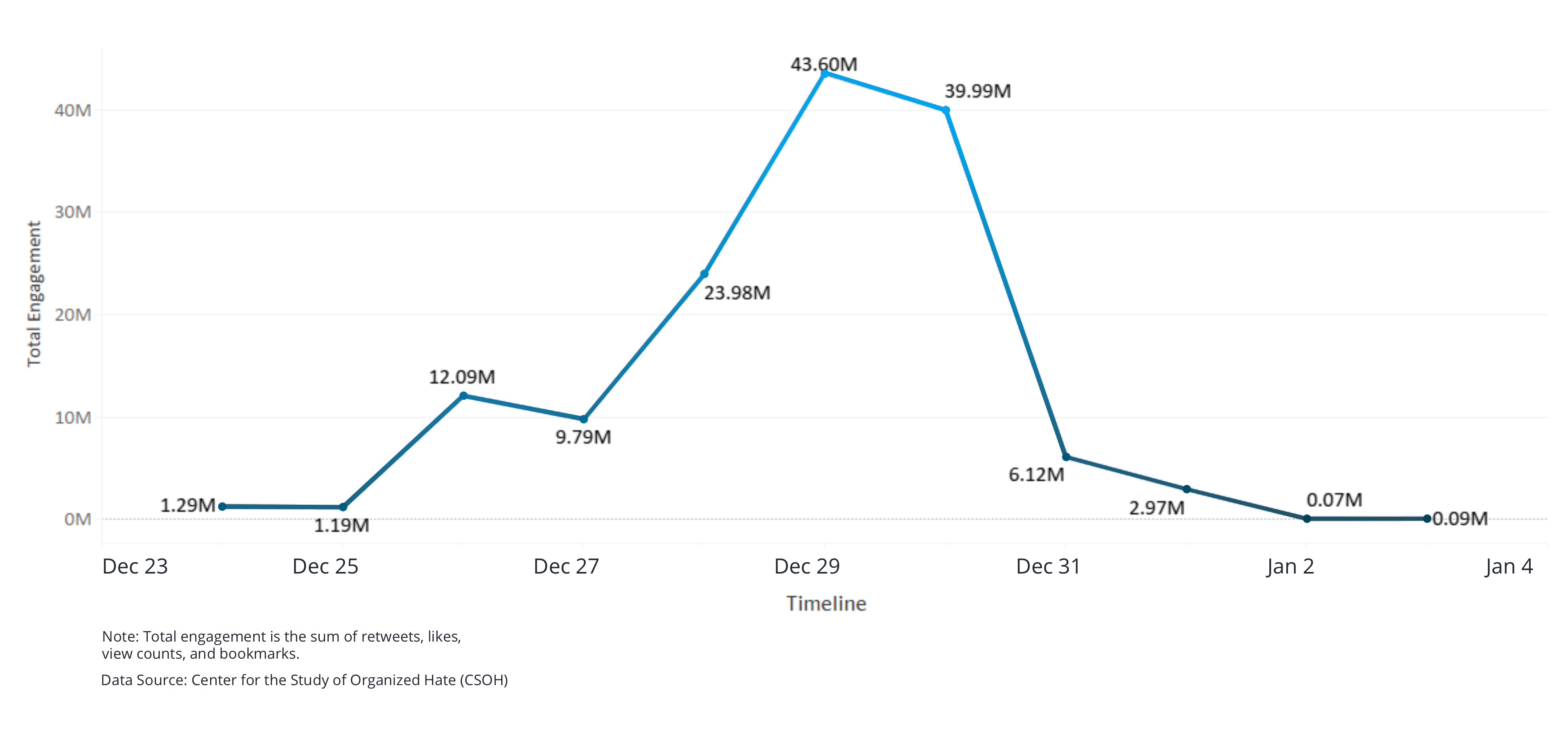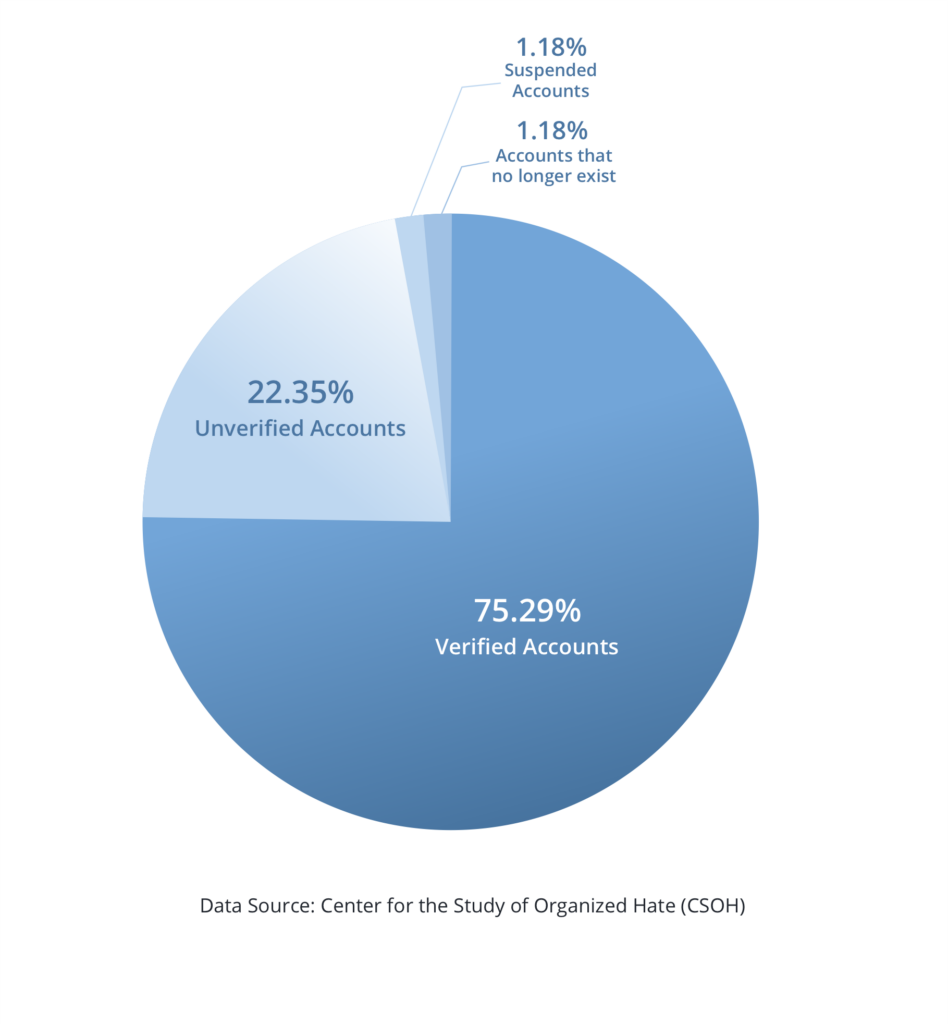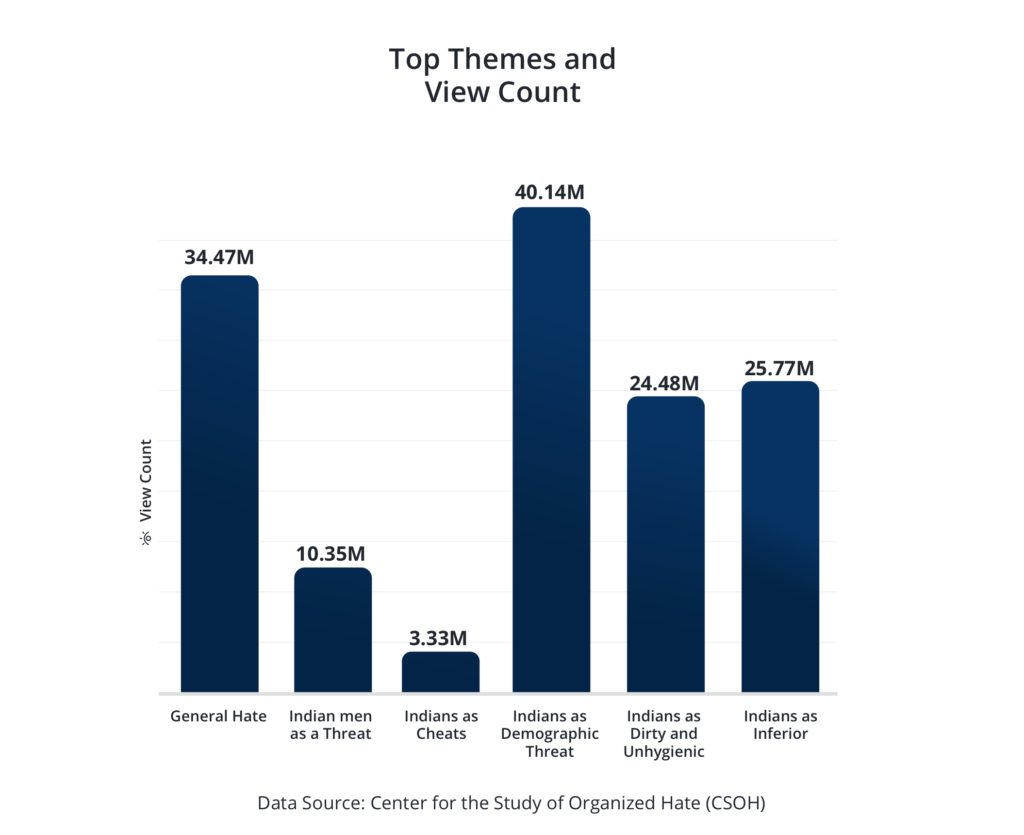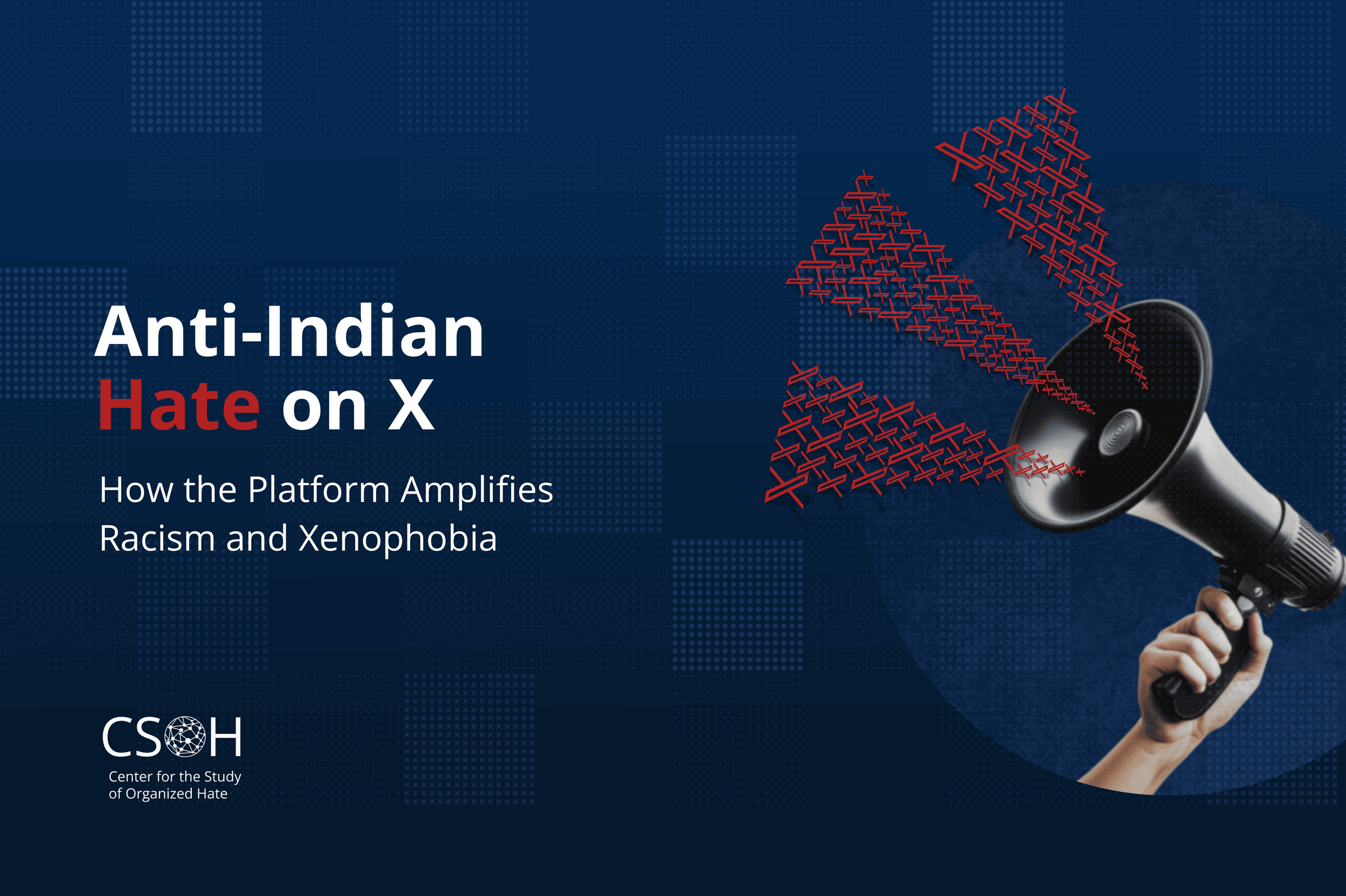Introduction
The last week of December 2024 witnessed an unprecedented outpouring of unequivocally anti-Indian racist hatred against Indians and Indian-Americans on X. The spark for this hatred was the appointment of Indian-origin technologist Sriram Krishnan as an adviser to the incoming Trump administration on Artificial Intelligence, announced on December 22.
The backlash was compounded by Vivek Ramaswamy’s X post on December 26. Indian-American Ramaswamy was appointed by President-elect Donald Trump, alongside Elon Musk, to lead the proposed Department of Government Efficiency (DOGE), an agency aimed at reducing government waste. In his post, Ramaswamy criticized ‘normal’ American culture with that of “foreign-born” engineers, labeling the former ‘mediocre,’ inaugurating a firestorm of posts in response. Krishnan’s prominence and his call for reform to ease the path of skilled immigrants on H-1B visas for green cards and citizenship further added fuel to the fire.
Laura Loomer, a far-right influencer, conspiracy theorist, and ardent Trump supporter, became one of the most active voices targeting Indian-Americans on X . Loomer opposed Sriram’s appointment as antithetical to the nativist principle of ‘America First,’ a MAGA talking point, on grounds that he had called for removing green card caps and that he wanted to grant science, technology, engineering, and math (STEM) jobs to immigrants that ‘rightfully’ belonged to Americans. Loomer is an important and influential figure in the MAGA universe. Her public disagreement and feud with Musk on the H-1B program—which allows U.S. employers to employ foreign workers in specialty occupations—is a reflection of the MAGA base’s unflinching opposition to immigration and indicates a schism between various constituencies of Trump supporters. Additionally, as an unabashed white supremacist, Loomer’s stance is likely to galvanize the more extreme racist and white supremacist elements among Trump supporters, which may well lead to a rise in anti-Indian sentiment and anti-South Asian sentiment.
Ramaswamy’s original post, full of simplistic generalizations and essentializations about American culture as well as the culture of foreigners, and, by extension, that of immigrants, was open to criticism on many grounds. Indeed, the responses on X ran across a gamut of themes, including the inherent unfairness of the H-1B visa program system, abuses of the system by Indians and American corporations, the ‘disenfranchisement’ of American workers through offshoring and outsourcing, the strengths of the American culture that Ramaswamy had criticized, and the betrayal of what Trump had promised his MAGA base.
However, accompanying these themes and often interwoven with these sentiments was an unequivocal and deeply troubling expression of anti-Indian racism. With Musk and Trump both expressing support for the H-1B program, the racism and hatred showed no signs of abating, if anything only ramping up in intensity and spread. While it may be easy to label such viral hatred ‘spontaneous,’ the prominence of certain racist themes and tropes and their repeated affirmation present a compelling case for seeing it as a form of organized, systematic hatred, fanned by powerful actors.
Several themes clearly stand out in the anti-Indian narrative of hate that has manifested itself since December 22, when Trump announced Sriram Krishnan as the senior adviser on artificial intelligence, and December 26, following Vivek Ramaswamy’s post on American ‘mediocrity.’ The racism and hatred can be analyzed through two distinct dimensions: first, through generic stereotypes about immigrants and people of color, which have historically and recently been applied to groups like Muslims, Haitians, Hispanics, and Middle Easterners; and second, through specific stereotypes targeting Indians in particular.
Generic and particular stereotypes are typically combined or interwoven in numerous posts. For example, the idea of immigrants as thieves and cheats underlies claims that Indians lie to get H-1B visas, and the racist stereotype of Indians as “smelly” or people who defecate in public draws on longstanding stereotypes of immigrants or minorities as unhygienic and uncivilized. Importantly, these specific themes and narratives themselves are articulated within a fundamentally racist framework that considers white Americans to be the only true, authentic, or ‘real’ Americans, with minority groups such as Indian-Americans excluded by definition.
The speed with which the distinction between legal or ‘good’ immigrants and ‘illegal’ or ‘bad’ immigrants collapsed in the discussion about Indians and H-1B visas on X is further affirmation of the clear presence of white supremacist ideology on X . During successive presidential campaigns, many Trump supporters, including some Indian-Americans who ironically backed him in 2024, suggested that Trump would only target ‘illegal’ immigrants and not those who had entered the U.S. by legal means. Other sections of his supporters and MAGA adherents, however, tend to express opposition to immigration in general. In such constructions of American identity as racially white, undercurrents or overt expressions of white nationalism are frequently combined with assertions that the West is fundamentally Christian and that non-Christians cannot, by definition, be American. As the example below shows, there is a deep-seated nationalist anxiety at work over what it means to be American at all.
It is essential to clarify that these attacks are not exclusively aimed at Hindus, whether of Indian or American origin. Rather, the attacks are directed at everyone perceived to be of Indian origin, which, as our analysis reveals, also includes members of the Sikh community. Various posts that we documented highlighted xenophobic sentiments toward all Indians, not just Indian Hindus. For example, on December 29, the account @DamielBernaldo posted that “it’s kinda crazy that we even let indians in this country.” Four days prior, on December 25, X account @TheRoyalSerf posted, “Fuck indians and fuck india” which reached an audience of 315k. Both examples reinforce our claim that these attacks are not narrowly anti-Hindu in nature, but anti-Indian.
The claim that such attacks are ‘Hinduphobic,’ as Indian-American Congressman Shri Thanedar of Michigan’s 13th Congressional District Congressman has suggested, is unfounded. To define these attacks as ‘Hinduphobic’ merely echoes the Hindu nationalist credo that Indian identity is synonymous with Hindu identity and that non-Hindus are not really Indian. According to Hindus for Human Rights, a U.S. based advocacy group, ‘Hinduphobia’ is often invoked by Hindu far-right organizations in the U.S. as a means of targeting critics of Hindu nationalism and deflecting attention from the violence by Hindu extremists against religious minorities in India.
Key Findings
- The Center for the Study of Organized Hate (CSOH) documented and analyzed 128 X posts targeted at Indians broadly within the Western context.
- All posts in our dataset received a total of 138.54M views on X as of January 3, 2025. 36 posts received over a million views, 12 of which claimed Indians to be a demographic threat to white America.

- 64 of the 85 X accounts documented in our dataset are subscribed to X Premium and display a blue badge on their profiles.

- The posts were in violation of X’s policies on Hateful Conduct. Violations included Incitement through ‘inciting fear or spreading fearful stereotypes about a protected category,’ slurs and tropes, and dehumanization.

- As of January 3, 2025, 125 posts in our sample remain active. Eight posts have been marked as sensitive, and one post remains active with limited visibility due to potential violations of X’s rules against Hateful Conduct.
- Only 1 of 85 accounts in our database has been suspended by X.
- Notably, these attacks were not exclusively aimed at Hindus of Indian or American origin but extended to all those perceived as being of Indian descent, including Sikh community members.
Recommendations
Recognition of Anti-Indian/South Asian Racial Slurs: X’s policy on hate speech prohibits “targeting others with repeated slurs, tropes or other content that intends to degrade or reinforce negative or harmful stereotypes.” Enforcing this policy requires regular updates and monitoring of hateful slurs that emerge in different contexts. The platform did ban a number of accounts associated with the racist Groyper movement, but the lack of consistency in content moderation and enforcement of existing policy means that many suspect that the accounts were banned simply for disagreeing with the site’s owner.
Expanded and Refined Definitions: The report shows that a number of South Asia-focused racial slurs are widespread on the platform. Some terms like ‘pajeet’ are relatively recent, while others like ‘Curry’ have been in long use and have undergone some destigmatization. Content moderation actions require active monitoring of the use of racialized terminology, as well as an understanding of the positionality of the speaker. X must ensure that its content moderation policy is aware of the nuances of such language on and beyond the platform.
Establishment of an Advisory Council: The dissolution of Twitter’s Trust and Safety Council in December 2022 harmed the platform’s reputation and ability to respond to the evolving realities of online hate. X must create a new advisory council to consistently monitor the platforms and issue actionable recommendations.
External Stakeholder Engagement Framework: Stakeholder engagement is critical for all platforms, and X must proactively reach out to scholars, activists, and community leaders for advice on hate speech trends and policy updates. This must be done in a transparent manner for both users to understand policy changes, and external stakeholders to be able to monitor the impact of their recommendations.
Use of Community Notes Proactively: X’s Community Notes feature allows contributors to add context, such as fact-checks under a post. This could be used to contradict non-factual and fabricated claims regarding immigrants and temporary workers, including crime statistics, percentage of jobs taken by immigrants, conditions, and restrictions on short-term visas, student visas, etc.
Community Empowerment: While it is inevitable that any platform will have some degree of discussion on immigration policies of various countries, platforms can play a proactive role in ensuring that such discussions are informative rather than hateful. It is important for platforms to specifically intervene as immigrants (and refugees) may not be clearly identified as protected categories in many countries.
Community Reporting Tools: Creation of a specific category of ‘vulnerable migrants, refugees, or displaced persons,’ which would prohibit hateful, violent, or other prohibited expressions aimed at them.
Reporting Intersectional Hate: X’s current reporting tools do not allow for flexibility in reporting intersectional forms of hate. As an example, a post could insinuate that Indians are unhygienic (Hate) and include a call for ‘cleaning’ the country (Violent Speech). Users can only report one violation at a time, which means that in the case a user fails to correctly identify the specific violative clause, the piece of content may continue to be hosted on the platform.
Transparency: Many jurisdictions require platforms to publish transparency reports (Digital Safety Act in the European Union, Online Safety Act in the U.K., etc.). X could use the opportunity to clarify the extent of anti-Indian/South Asian hate and its actions regarding the moderation of actionable content. X leadership could also decide to proactively provide additional context of trends in violative content especially in relation to marginalised groups and communities.
Counter-Speech: Counter-Speech is defined as speech that challenges hateful narratives. Platforms have long sought to promote counter-speech as a better solution to hateful content rather than bans and restrictions on violative content. X must identify a coherent Counter-Speech strategy that aligns with the company philosophy. This may include the following:
Enhanced Discoverability: X should identify content that aligns with its counter-speech strategy and enable visibility for such content in the ‘For You’ section, especially for users who openly deconstruct hateful narratives.
Premium Features: One of the most prominent changes to the platform has been the transition away from legacy verification. X introduced X Premium as a paid verification feature, which has been repeatedly criticized for amplifying hate speech, spam, and disinformation. However, extending premium features for counter-speech initiatives at discounted rates or even for free could help the platform.
Enforcement Options: Our report shows that 64 of the 85 aforementioned X accounts were verified (i.e., subscribed to X Premium). This brings into focus the potentially distorting effect of the Premium service on the platform, as hateful voices may be amplified. It has been reported that some accounts posting hateful content were banned or restricted, but, as previously noted, this has been rather inconsistent. Must improve its range of enforcement options:
Disqualification from Premium Services: Accounts that repeatedly post hateful or extremist content must be barred from X Premium. Moreover, posting and amplifying hateful or extremist content should be restricted for verified accounts. Pre-verification checks should ensure that the user doesn’t have a history of hateful or extremist conduct.
Creator Monetization: Currently, extremist and hateful content are categorized under ‘Restricted Monetization,’ this must be upgraded to the level of ‘Prohibited Monetization.’
Recommender Systems: Recommender Systems form the basis of most social media platforms, which means that extremist and hateful content can be promoted by users exploiting the mechanism. X must perform a systematic review of its recommender systems, and publish its approach towards preventing recommendation of hate and extremism.
